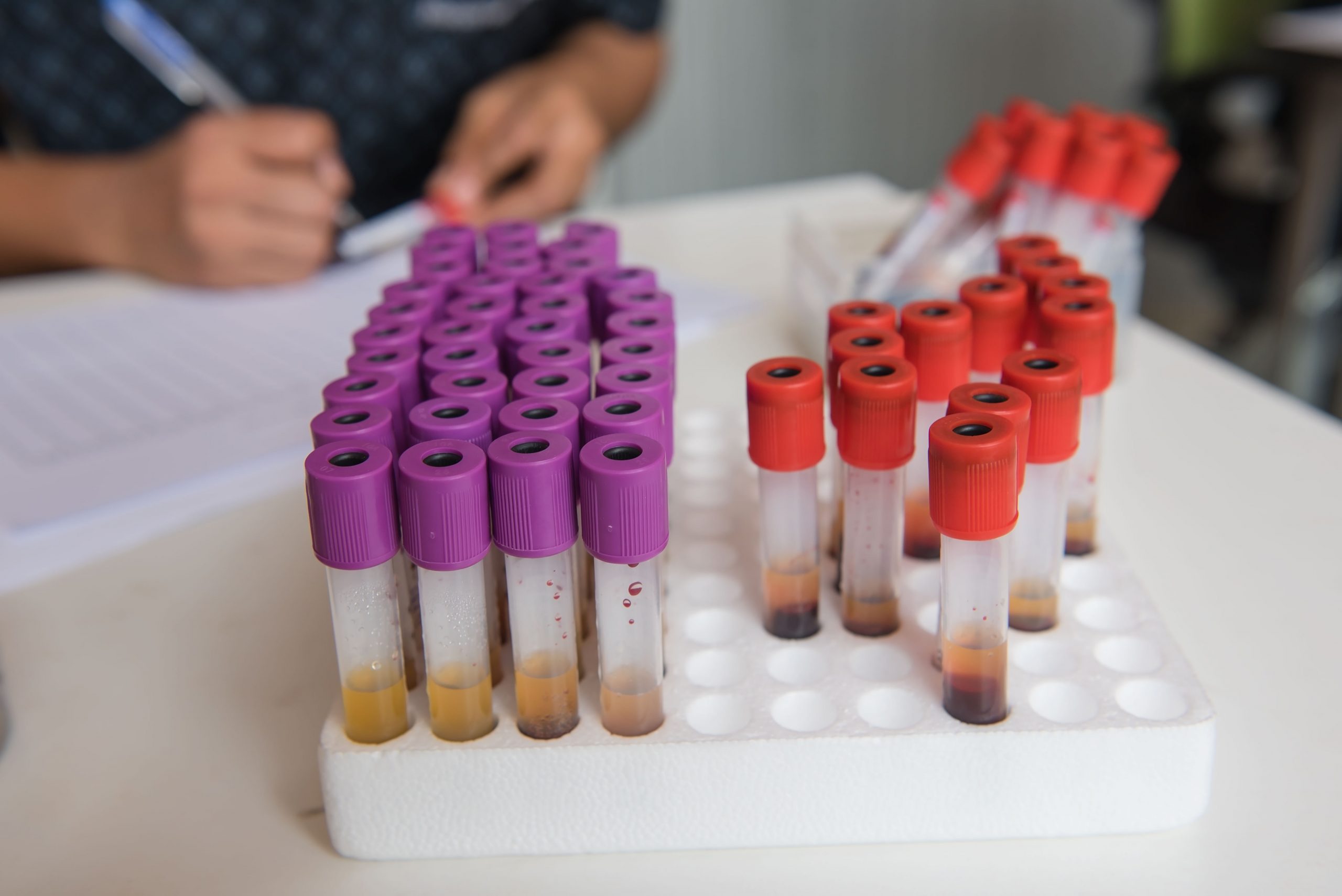Blood Test May Distinguish Parkinson’s From Multiple System Atrophy

A highly sensitive and specific blood test has been developed that can distinguish Parkinson’s disease from multiple system atrophy (MSA), a team at the University of California, Los Angeles (UCLA) Health reported.
The test examines the levels of a protein called alpha-synuclein in exosomes — tiny vesicles released by cells that end up in the blood. In Parkinson’s, alpha-synuclein comes from neuron-derived exosomes, while in MSA it comes from exosomes released by oligodendrocytes, another type of brain cell.
Based on the content and origin of the exosomes, this test can help discriminate between Parkinson’s disease and MSA.
“This is a major breakthrough, because it allows us to analyze what’s going on in the brain using a blood test,” Gal Bitan, PhD, the study’s senior author and a professor of neurology at the David Geffen School of Medicine at UCLA, said in a university press release.
The study, “α-Synuclein in blood exosomes immunoprecipitated using neuronal and oligodendroglial markers distinguishes Parkinson’s disease from multiple system atrophy,” was published in Acta Neuropathologica.
Parkinson’s and neurodegenerative diseases such as MSA have several symptoms in common, including muscle rigidity and tremors. Because of this overlap in symptoms, many cases are misdiagnosed.
“If they do have Parkinson’s, there are a lot of treatments that can help with the symptoms for a long time,” Bitan said. “If they have MSA, which is a very aggressive disease that leads to rapid deterioration, they would want to prepare. They would want to talk with loved ones, and possibly take care of their estate.”
Incorrect diagnoses can also affect clinical trial results, as potential treatments would be tested in people without the disorder under evaluation.
Parkinson’s and MSA both belong to a group of neurodegenerative conditions called synucleinopathies. These disorders are characterized by an excessive accumulation of alpha-synuclein clumps that can kill cells.
Previous studies have shown that exosomes released from the brain of Parkinson’s patients have high levels of alpha-synuclein. Exosomes are vesicles that carry a cargo — which can be proteins and/or nucleic acids — of the cells from which they are released.
Knowing that alpha-synuclein accumulates mainly in neurons in Parkinson’s and in oligodendrocytes in MSA, the researchers hypothesized that comparing the alpha-synuclein content in exosomes could help differentiate the two diseases.
To test their hypothesis, the team collected blood samples from people with Parkinson’s, patients with MSA, and healthy volunteers. Then, exosomes were captured using as bait the neuronal marker L1CAM or the oligodendrocyte marker MOG (myelin-oligodendrocyte glycoprotein). The concentration of alpha-synuclein was measured in these exosomes.
Researchers found that the levels of alpha-synuclein were significantly lower in healthy volunteers, and higher in the MSA group compared with the Parkinson’s group.
However, differences in the laboratory procedures used in different clinical sites caused some variation in the levels of alpha-synuclein detected. To solve this issue, the team used the ratio of alpha-synuclein in exosomes that came from neurons versus that coming from oligodendrocytes, rather than the absolute amount of alpha-synuclein.
“Using the ratio helped a lot with normalization of the data and eliminating site-to-site differences,” Bitan said.
Statistical analyses showed that the ratio between the alpha-synuclein concentration in oligodendroglial exosomes compared with neuronal exosomes could be used as a sensitive biomarker to distinguish between Parkinson’s and MSA.
Overall, “the data demonstrate that a minimally invasive blood test measuring [alpha-synuclein] in blood exosomes … can distinguish between patients with [Parkinson’s] and patients with MSA with high sensitivity and specificity,” the researchers wrote.
However, the team noted that the origin of the exosomes needs further validation, because L1CAM can be found on other cell types besides neurons.
“To our knowledge, a limitation of all the studies published to date using the strategy of biomarker analysis in putative [central nervous system]-originating exosomes, including our study, is the lack of validation of the cellular origin of the exosomes,” the researchers wrote.
“Future optimization and validation of the data by other groups would allow this strategy to become a viable diagnostic test for synucleinopathies,” they added.






